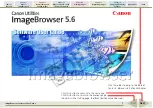
Introduction to TextBridge
1–9
◆
Deferred processing.
TextBridge enables you to scan all the
pages of a document to a TIFF or XIF file, then later open the
image file for document recognition. You can also save all the
pages to a multi-page image file or save each page as a separate
file.
◆
Output text file formats including HTML.
TextBridge
supports a number of output text file formats, including word
processor, desktop publishing, spreadsheet, HTML, and database
formats. Now you can process your text for publication on the
Web.
◆
Preview of page images.
TextBridge provides a set of tools for
previewing page images before processing them. You can
manually define areas of page images as zones to be processed
and capture only the text, tables, or pictures you want. You can
also edit the automatic zoning by adjusting the text, table, and
picture zones.
◆
Zone templates.
After you create a set of zones, TextBridge lets
you save and reload zone templates for new jobs. In this way you
can consistently process or ignore specific areas on the same type
of pages and save time without rezoning each page.
◆
Re-usable training data.
After you interactively train OCR, you
can save the training data in a file. You can reload this training
file for similar documents of the same page type. Using this
training file assures the highest recognition accuracy without
your having to repeat the training.
◆
Two-sided document processing.
If your scanner has a sheet
feeder, you can scan the fronts (odd sides) of the pages first, then
flip the stack and scan the reverse (even) sides. When scanning
and recognition are complete, TextBridge automatically collates
the text and keeps it in the original order.
Summary of Contents for TextBridge Pro Millenium
Page 1: ......
















































